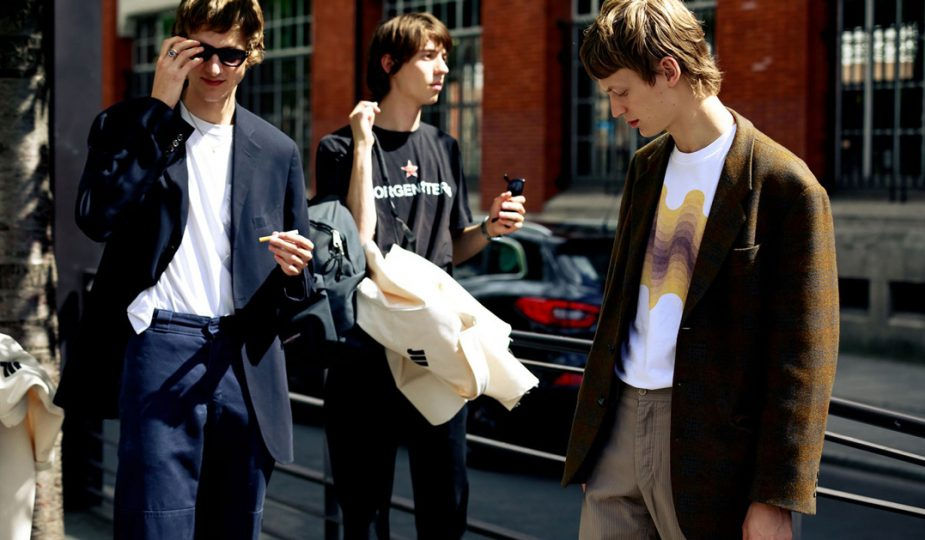Gender Fluidity And Fashion in Indian Cultural Context
- Upasana Sarangi
- Apr 28, 2020
- 3 min read
Updated: Oct 22, 2020

Here’s an attempt to look at the concept of gender fluidity without being extremely comprehensive. If I were to explain using very simple terms, the term gender fluidity basically refers to blurring the lines of the binaries such as man/woman, or feminine/masculine. A large part of these binaries are formed by the kind of attire an individual chooses to wear. Hence, addressing the issue of gender fluidity holds strong relevance in fashion.
Looking at it from a global perspective, gender fluidity in fashion has come a long way in erasing mental boundaries. Be it huge fashion brands such as Gucci making a statement with, ‘The Future is Fluid’ or be it the beloved boss-lady Lilly Singh, expressing her sexuality with her captivating fashion sense, gender fluidity has definitely made a position for itself in the industry. It has been quite (almost) established that this is the future we are headed at. But that is not what I really want to talk about here.
India, visibly, has held on to those binaries more rigidly than others. Again, the point is also not about patriarchy-bashing because that would defeat the purpose of this article. To understand the stems of gender fluidity in fashion in India, I had to go back in time, and read in-between the lines, and here’s what I inferred.

Source: Google images
The first argument that I want to make is that in Indian context, there is a dualism. By dualism, I mean that the labels attached to the gender were rigid, but the fashion/clothing adopted by those genders was rather fluid. To give you some more clarity, take the examples of the way Rajputs or the Mughals dressed when India was under the kinship rule. The ‘Angrakha’ which was gloriously carried by Emperor Akbar, now adorns the Fabindia stores, as women’s ‘Rajwada’ collection. Not to mention, more or less all the ethnic brands have experimented with women’s clothing taking complete inspiration from the ruler’s wardrobe. The use of flowy fabrics and pleats have presently gained an association with femininity, which was earlier not the case, as one can understand from the given example.
Now, let’s understand the scenario in a common household. If we take away the fabric, shapes, and stitching patterns, the only thing setting apart the male and female attire was the length of the cloth, and the way they were draped. One elongated fabric could be draped as a dhoti for men, and another as a saree for the women. Both were produced from the same loom and their material was as fluid as their fashion.

Bollywood moving towards this trend
At the risk of stating the obvious, I would also like to mention how earlier, in theatre, epic retellings or even the initial Bollywood movies, men were very comfortable with dressing up as well as playing female characters and entertaining the folk. Iconic actors such as Anna Salunke in Raja Harishchandra and Kamal Hassan in Chachi 420 redefined the progressiveness in fluid fashion culture. Bollywood which had later drifted away from the fluidity in terms of their scripts and characters, is now slowly breaking the barriers.
Coming back to the present, it is safe to say that India is progressing towards adopting a gender fluid fashion. It is more likely to be considered as making a ‘bold move’, but normalising the entirety of it is yet to be achieved. Some brands such as ‘Anaam’, ‘Bobo Calcutta’, ‘NorBlack NorWhite’, ‘Bloni’ and many more have amazing gender fluid fashion lines to support this movement. For those who have read my previous blog, yes it does fall under the spectrum of Avant Garde Fashion.
If talked about the people from outside the industry, or may I say general public, gender fluidity in fashion is the means for them to express a part of their personality which is not associated with their gender. It can be considered as their way of challenging the society or being comfortable with their own self. It can also mean embracing their masculine/feminine side, or even coming out of their closet. In conclusion, this movement is a celebration of individuality, uniqueness, sexuality, inclusivity, and progressive culture.
To read more blogs like this, please don’t forget to scroll down and click on the follow button to receive updates via mail. Don’t forget to share it with your friends and celebrate this idea. Have an amazing day!
~ Upasana







Comments